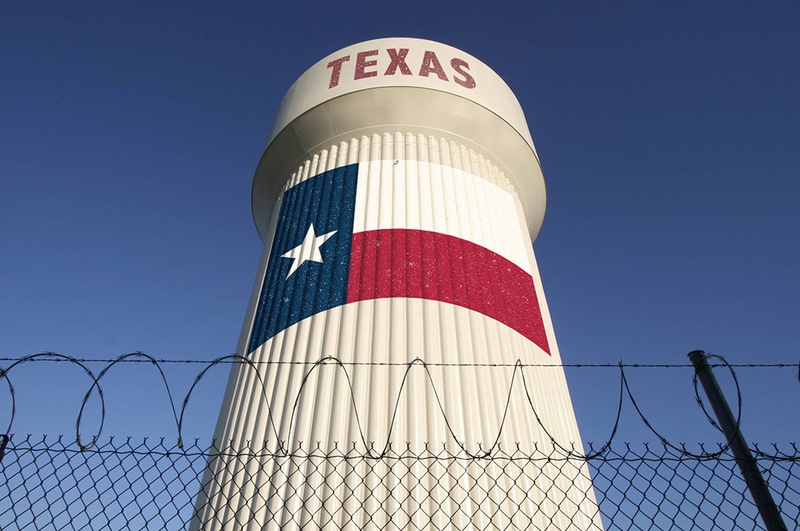Report: Texas Must Increase Water Conservation Efforts
Most water utilities in Texas need to “substantially increase” their conservation efforts, according to a recent review of more than 300 city utilities by the Texas Living Waters Project, a consortium of environmental groups.
Among the state’s larger cities, Austin topped the list of those with strong conservation efforts claiming 90 points out of a possible 100. Kingsville ranked lowest, receiving just 10 points.
The Project’s Water Conservation Scorecard looked at how well utilities comply with state reporting requirements, whether they limit outdoor watering and how much water disappears from their distribution systems.
The Living Waters Project, a partnership between the Sierra Club’s Lone Star Chapter, the National Wildlife Federation and the Galveston Bay Foundation, found that more than half of these large utilities scored less than 60 points on the ranking.
Jennifer Walker, water resources program manager for the Sierra Club, said the group “didn’t have any preconceived notions” when it started researching these conservation efforts because “this hasn’t been done before.”
“We wanted to use data that was available publicly, that utilities turn in through all the different reporting mechanisms that our state has … and use it to try and give a snapshot of where we are for water conservation and tell a good story about water conservation in Texas,” Walker said.
“Water is a finite resource, and one of our ultimate objectives is to be sure that we have water to support fish and wildlife habitats and recreation.”— Jennifer Walker, water resources program manager for the Sierra Club’s Lone Star Chapter
Utilities were ranked primarily on their plans or intentions to conserve water instead of analyzing data like water consumption because usage and need vary drastically between cities, according to Ken Kramer, water resources chair of the Sierra Club’s Lone Star Chapter.
“What we were really trying to do was see what it is that the utilities themselves have set as their own targets for reducing per-capita water use and are they actually taking steps to do that,” Kramer said. “It’s sort of a mixture of looking at effort and performance, but part of the problem is just not having a truly common understanding of what water conservation achievement actually means. ”
While utilities could score five points just for having submitted various conservation plans to the state, the report also looked at how much water was being lost within each system.
The review found that 40 percent of utilities reported losing at least 11 percent of their water, and 20 percent reported losses of more than 15 percent.
The report said water loss is inevitable, but “that is no excuse, however, for not carrying out a robust effort to find and repair leaking pipelines, respond expeditiously to water main breaks, and spot illegal taps, among other measures.”
Karen Guz, director of Conservation for the San Antonio Water System, said she was surprised the city received “such a mediocre score” of 73 points.
“Conservation has been a very high priority in San Antonio for 20 years,” Guz said. “We invest very rigorously in it.”
According to Guz, by looking at the total percentage of water loss as opposed to technical aspects of water loss that consider specifics of a city’s processing systems, San Antonio was inadvertently penalized.
“I hope the conversation goes beyond just comparing the percent numbers to asking questions about the validity of the production data and other contents of the [Water Audit Report],” Guz said.
Walker said she hopes the scorecard pushes utilities to reconsider their water saving plans and set goals for conservation moving forward.
“One of the reasons that we, environmental organizations, work so hard on water conservation is that water is a finite resource and one of our ultimate objectives is to be sure that we have water to support fish and wildlife habitats and recreation,” Walker said. “We’re not going to be able to do that if we don’t use water efficiently in our communities. We need to make sure that we have enough water to go around for both people and the environment.”
Following Austin, the ranking of large utilities doing best in conservation was topped by
- San Marcos, with 85 points
- Frisco, with 82 points
- San Angelo, with 81 points
- Lewisville with 80 points
While Kingsville scored the fewest points, it was just 5 points shy of the next-lowest-ranking utilities:
- Southern Utilities in Tyler, with 15 points
- Lower Valley Water District, with 15 points
- Horizon Regional MUD in El Paso, with 20 points
- Galveston, with 20 points
Disclosure: The San Antonio Water System and Sierra Club have been financial supporters of The Texas Tribune. A complete list of Tribune donors and sponsors can be viewed here.
This article originally appeared in The Texas Tribune at http://www.texastribune.org/2016/05/18/report-texas-must-increase-water-conservation-effo/.






